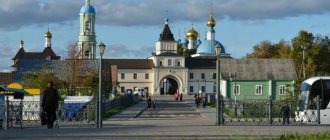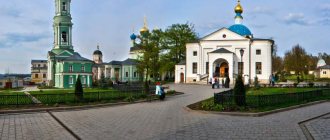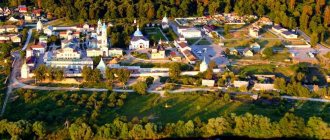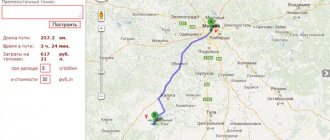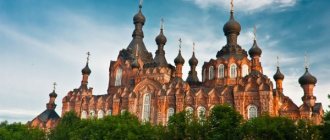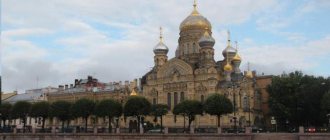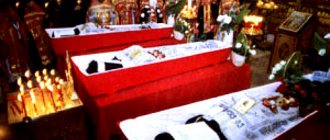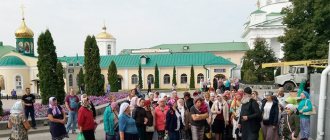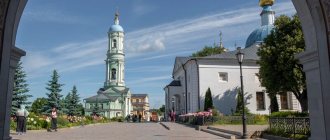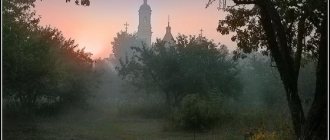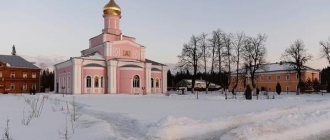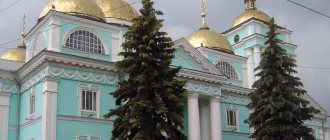It was here that eldership flourished, like a special flower of God. The Council of the Holy Fathers of Optina Pustyn, glorified in 1996, is a special manifestation of the goodness of God. Now many people are interested in Optina Pustyn, the monastery: how to get there from Moscow? Let's explain:
From Moscow, from Kaluga from bus stations by bus, it is best to go to Sosnenskoye because it goes straight to Optina, but it can also go to Kozelsk. In Kozelsk, right next to the bus station, there is a minibus to Optina, or a taxi. On Mondays, minibuses do not go to Optina. On Sunday they are until 14.00!
By car from Moscow to Optina Pustyn:
By bus from Moscow to the Optina Monastery::
By rail from Moscow:
About Optina Hermitage and its elders
The elders, who acquired spiritual fruit within themselves, taught us that there is the Love of God, which poured out abundantly into their hearts. This is the essence of old age. The elders, called to this service by God Himself and receiving from Him the gifts of the Holy Spirit, remained constantly in sobriety and doing mental-heart prayer. So they, cleansed of passions, saw even the slightest sins. The elders possessed the gifts of clairvoyance, prophecy and miracles. They saw the soul of man and opened the way to salvation for people.
Eldership received its vivid expression in the environment of monasticism. The conciliarity of eldership implies the indissoluble unity of the elders who have already died and are still working on earth. And today they do not cease to spiritually instruct those who come to venerate their holy relics.
Holy Elder Leo
The first Optina elder was Saint Leo. He laid the foundation for the eldership in Optina, in accordance with his name, as king and ruler. This wondrous lamp of God was born in Karachay, Oryol province, in the year 1768. At baptism he was named Leo. In his youth he served as a clerk and had such remarkable strength that he managed to strangle a wolf that attacked him in the forest. Leo learned wisdom from the books of the Holy Scriptures and at the age of 28 decided to leave this world and go to Optina Pustyn. Zealously fulfilling obedience, he set an example for others. Soon Leo took monastic vows with the name Leonid. Then he was ordained to the rank of hierodeacon, and then to the rank of hieromonk. After accepting the rank, his heart did not become proud. As before, Leonid showed the brethren an example of obedience.
One day, having returned from obedience (he was hauling hay) and very tired, Leonid was going to have dinner. But the rector blessed him to sing the all-night vigil instead of the choir residents, who went on strike so that their demands would be met. Leonid and one brother sang the entire all-night vigil, despite hunger and fatigue. Another time, sacrificing himself, he saved his seduced brother, who was about to throw himself down from the bell tower.
When the time came to choose someone for the position of rector, and they offered it to Leonid, he refused. But the brethren unanimously decided to choose him. Leonid then served at the kvass factory. The monks came to him, took off his apron, dressed him appropriately, and practically forcibly took him to the archpastor for approval. The leadership position did not change the elder’s personality. He did not like her, and soon he retired into the forests, adopting the schema with the name Leo. Meanwhile, Moses, who was then the abbot of Optina, prayed for a message from the elder of their monastery. Through the providence of God, Saint Leo became them. By that time he had the gift of insight. Monks flocked to his cell asking for his guidance. Soon the elder became known throughout the country. People of different classes began to come to him from everywhere. He had extraordinary insight and often himself told those who came their hidden sins. The elder healed the sick with prayer and reprimanded those possessed by demons.
- One monk was beaten and died soon after. The elder predicted a quick death for the killer himself. And so it happened.
- The nun was sick with breast cancer, her doctors had already sentenced her to death. Saint Leo anointed the nun suffering from pain with blessed oil, prayed for her, and her pain went away. By evening the nun was already healthy and lived for more than twenty years.
- The enemy of the human race raised a fight against the elder. At the instigation of the evil one, false denunciations were written to the bishop. They were followed by persecutions, relocations, and bans on accepting people. But the elder complacently endured the difficulties and, singing “It is worthy to eat,” moved to a new place of service.
- The elder stopped receiving people several times by order of the bishop, but after a while, seeing the suffering of the people, he again resumed receiving people.
Saint Leo was notified by God of his imminent death and, not without sorrow, prepared for it. His dying illness was severe. His whole body was very cold, but he said: “If the Lord sends grace, my body will warm up after death.” After the Sacrament of Unction and Communion of the Holy Mysteries, the elder felt his death approaching and began to rejoice. Although the bodily suffering was unbearable, his face was bright and joyful. With prayer on his lips, he went to the Lord.
After death, his body began to warm up, as he had predicted, so that even the coffin and the board on which he stood became hot!
The monk was buried near the cathedral Church of the Presentation. And now he prays at the Throne of God for all those who come to him for help and spiritual advice.
Pilgrimages
The pilgrimage group sets itself the task of conducting spiritual and educational activities among parishioners and non-parishioners of our Temple, organizing near and far pilgrimage trips to the holy places of our region, country, near and far abroad
How to get to Optina Pustyn by car?
By personal transport from Moscow
Getting to Kozelsk, and then to the Optina Pustyn Monastery from Moscow is both simple and difficult at the same time. Simple, because there are many roads, difficult - for the same reason (the problem of choice). You can move either along the Kievskoe highway, or along the Kaluzhskoe highway, or through Podolsk. They all converge on a circle outside Obninsk. The last two, however, are somewhat earlier. Due to traffic jams near Moscow, you can use the Simferopol highway, through Serpukhov and Tarusa. But this path is dark and completely deserted in the evenings. The detour turns out to be large and the road is not very good, therefore, if you do not set a goal to visit the Koltsovo caves near Ferzikovo, then it is better not to use this road.
For example, we travel from Moscow to Kozelsk via Podolsk to Obninsk. After the Obninsk circle along the Kyiv highway until you turn onto the new bypass road around Kaluga (left onto the bridge beyond the village of Detchino, approximately 134 km from the Moscow Ring Road, sign “Kaluga-Tula”). Further, without going to Kaluga, follow the signs, of which there are enough, to Kozelsk
After the bridge, after passing the traffic police post, after 800 meters there will be a right turn (the road goes left to Tula, and we go right to Kozelsk).
- here we turn right
This road, connecting the ancient cities of Kaluga, has been known since time immemorial. Almost all the settlements along it have a very rich history. Soon after this turn there is a circle in the village of Sekiotovo with the Kaluga stele, here we go left.
— having driven along the ring around the stele, turn left
A few kilometers later, after the turn, there will be a sign
The next historical place on our route is the village of Andreevskoye, named after the hero of the Battle of Kulikovo, Prince Andrei of Kaluzhsky, Tarussky and Serpukhovsky.
Next to Andreevsky is the village of Korekozevo, stretching for several kilometers. In the past, the surrounding areas were called monasteries because there were five monasteries in these areas. During the reign of Catherine II, all of them, with the exception of the ancient Lyutikov Monastery, which was located on the site of the present village of Korekozevo, were abolished. This monastery-fortress was built by the architect Lyutikov on behalf of the Vorotynsky princes, hence the name. Before the revolution, there were unique architectural monuments of the 16th century. In 1918, the monks of the Lyutikov Monastery resisted representatives of the Soviet government. Later the monastery was completely destroyed.
Before the bridge over the Oka there is a fork in the road: straight to Kozelsk, left to Suvorov and Tula.
- here we turn right, then across the bridge. Be careful not to speed; overtaking is prohibited in this area.
Immediately after the turn, the road rises to a high hill, from which a panoramic view of the city of Przemysl and the Oka Valley opens. After the bridge we reach a circle, in the center of which there is a stele with the inscription “Przemysl” (the city itself is somewhat to the side), right here.
— the arrow points to the Przemysl stele
Then the road, with practically no branches, leads to Kozelsk. Along the way, about 20 kilometers before Kozelsk, there is a right turn to the village of Shamordino and the Kazan St. Ambrose Women's Hermitage. The monastery was built by the architect Sherwood from red brick, there are many flowers and a magnificent view of the floodplain of the Serena River. The monastery is gradually healing the wounds inflicted by the years of Soviet power, from the beginning of the devastation in 1923 and the extermination of the sisters to the establishment within its walls of an agricultural technical school with a combine harvester in the altar of the Kazan Cathedral.
Already a few kilometers away, at the entrance to Kozelsk, you notice on the left side in the distance across the field the shining blue and gold domes of the Holy Vvedensky Monastery of Optina Pustyn. Don't miss the signposted left turn.
After the turn, we enjoy a beautiful view of the Optina Pustyn Monastery.
- here and further you can start taking photographs.
On the way back from Podolsk, you can take the nearby Simferopol highway to avoid traffic jams on the approach to Moscow. But you can also drive along the Moscow-Kyiv highway directly to the Moscow Ring Road.
The route Kaluga - Kozelsk - Optina Pustyn is one of the main tourist destinations in the Kaluga region. Therefore, the road is good all the way. The situation with gas stations is as follows: two gas stations at the exit from Kaluga, two near Przemysl and one in Kozelsk.
Optina Pustyn Monastery how to get there from Moscow
Optina Pustyn Monastery - Vvedensky Stavroprigial Monastery is located in the Kaluga region. From Moscow – only 266 km. But it is difficult to get from the capital to the Optina Pustyn monastery by public transport without transfers. Only 2 bus trips - at 12:45 and 15:00 - go from Moscow to Sosensky and stop at the stop at the monastery. They are convenient for those pilgrims who are going to spend the night in Optina Pustyn, because they arrive there in the evening.
If you leave the capital by bus at 6:00, you can make it in time for the midday services. The train journey takes 7 hours and is tiring with 3 transfers.
Brief history of the monastery
People lived on the modern territory of the Kaluga region for a very long time. During excavations, archaeologists found sites of Stone Age people. Kozelsk was mentioned in chronicles already in 1146.
The small town became famous for its unprecedented resistance to the Tatar-Mongols in 1238. For seven weeks the huge army could not take Kozelsk. After its capture, the town was burned to the ground and turned into a wasteland, glorious warriors and residents were killed.
The history of the monastery begins much later. The exact date of foundation of the monastery is unknown, but in 1625 it already existed. A secluded, deserted place in the middle of the forest was chosen by the hermits for the monastery. In the 17th century there were only monks' cells and a wooden church. At the same time, the Vvedensky Cathedral was built.
During the reign of Peter I, the monks were almost deprived of their livelihood, the mill and river crossing were taken away, and fishing was prohibited. And then it was decided to close the monastery, however, it was only inactive for 2 years, and the monastery was empty for a short time.
Metropolitan of Moscow Platon
Metropolitan Platon of Moscow and Bishop Philaret of Kaluga played a huge role in the revival of the monastery.
It is important to know: the role of Father Abraham, appointed rector of Optina Pustyn, is great. It was he who introduced the way of life in the monastery that lasted until the 20th century - the time the monastery was closed.
His concern for the material well-being of the monastery, the repair of dilapidated church buildings, and the attraction of believers from the surrounding area over the many years of his activity made the monastery famous not only in the Kaluga province, but also beyond its borders.
Moscow Metropolitan Filaret
The most important period in the life of Optina Pustyn was the time when Philaret became Metropolitan of Moscow. Despite his high clergy, Filaret loved a quiet, silent life, and therefore patronized the monastery and visited it often.
Please note: under Filaret, a kilometer from the monastery, the monastery of John the Baptist was built, which became the place of life for all the elders of Optina Pustyn.
Many books have been written about eldership in Rus'. This unique, purely Russian phenomenon dates back to the times of Sergius of Radonezh. An elder, as a rule, is a priest - a monk who provides spiritual guidance and mentoring to people who come to the monastery. This guidance takes place in the form of conversations or advice, as well as in correspondence with spiritual children.
Elder hermits
Filaret invited the first hermit elders to Optina Hermitage. Here this amazing phenomenon flourished most, making the monastery the spiritual center of Russia.
An interesting fact: the monastery became famous not for architectural miracles, not for ancient icons, but for the great Optina elders.
For almost a century, a huge number of pilgrims flocked to the Optina Monastery to receive advice, instructions, and spiritual help. Among the visitors to Optina there were many celebrities: N.V. Gogol, F.M. Dostoevsky, L.N. Tolstoy, philosopher V.S. Soloviev, V.A. Zhukovsky, S.T. Aksakov, F.I. Tyutchev, P.I. Tchaikovsky, A.L. Chizhevsky and many others.
“Pitfalls” of traveling by train
The monastery is located next to Kozelsk. But keep in mind that there is no railway in this city. Therefore, plan your route in advance like this:
- From Kievsky station you need to get to Kaluga. The route duration is 3.5 hours. Ticket price – 600 rubles.
- From Kaluga go to Sukhinichi. The route duration is 1.5 hours. The fare is 380 rubles.
- In Sukhinichi, wait for the minibus to the monastery. If energy and time allow, then walk. Distance – 3 km.
Schedule of services and worship services
Every day within the walls of the community they conduct:
midnight office at 5:30; liturgy at 7:00; memorial service at 9:00; late liturgy at 10:00; memorial service after late liturgy at 12:00; prayer service with akathist at 15:00 evening services at 17:00
On holidays and Sundays:
early liturgy at 6:00; cathedral prayer at 8:00; late liturgy at 10:00; memorial service at 12:30; prayer with akathist at 15:00; evening services at 17:00.
During the summer, a huge number of visiting pilgrims can come to the cathedral. Because of this, it is possible to hold these services simultaneously in several churches.
What are the additional benefits of taking a taxi?
If you are planning to perform the Sacrament of Baptism, then prepare for your trip in advance. Keep in mind that you need to arrive at the monastery the night before at 18:00 for a public conversation. The next morning, get ready to serve the Divine Liturgy, and at 13:00 - receive the rite of Baptism.
For trips to shrines with the whole family, we recommend ordering Hyundai Starex, Mercedes Vito or Chevrolet Orlando minivans. A 5-star taxi will comfortably accommodate your loved ones and guests. To transport a child, the driver installs a seat. The minivans have air conditioning, free Wi-Fi, and comfortable armchairs. On the way back, you can look at the CDs you purchased at the monastery.
To enhance the impressions of your trip, be sure to turn to the village of Shamordino and stop at the Kazan St. Ambrose Women's Hermitage. A 5-star taxi driver will be sure to wait while you admire the magnificent view of the Serena River and the building of the Sherwood monastery.
Open left menu Optina Pustyn
Optina Pustyn is one of the most famous monasteries in Russia. According to legend, it was founded at the end of the 14th century by a robber named Optia, who repented of all his sins and took monastic orders in the 19th century and became one of the spiritual centers of the country. At one time, Dostoevsky came here to find solace after the death of his son, and Tolstoy was inspired by these places to write the novel Father Sergius. In 1923, Optina Pustyn was closed and was opened as a museum for a long time. At the end of the 20th century, the monastery was returned to the Russian Orthodox Church. Currently, churches are being restored in the monastery, and monastic life is being revived. The monastery has again become a place of pilgrimage; people come here to venerate the relics of the Optina elders and pray.
Optina elders
At the Local Council of 1988, Hieroschemamonk Ambrose (Grenkov) was glorified. The remaining elders were glorified on July 26, 1996 as locally revered, and in 2000 throughout the church. On December 25, 2009, the Holy Synod approved the service to the Council of the Optina Elders, prepared by the Synodal Liturgical Commission, and recommended it for church-wide liturgical use.
Hieromonk Nikon (Belyaev) was glorified with the rank of venerable confessor, Archimandrite Isaac II (Bobrakov), who was shot by the Bolsheviks, was glorified with the rank of venerable martyr.
- Hieroschemamonk Lev (Nagolkin) (1768-1841) - the first founder and inspirer of the Optina eldership. The entire life of this elder, spent in selfless service to God and his neighbors, was an expression of evangelical love. Through his exploits, unceasing prayer and God-imitating humility, he acquired the abundant gifts of the Holy Spirit.
- Hieroschemamonk Macarius (Ivanov) (1788-1860) served as an elder in the Optina Hermitage at the same time as the Monk Leo, and after his death, until his death, he carried out the great and holy feat of caring for the elderly. The name of Elder Macarius is associated with the beginning of the publication of patristic works in the monastery, which united the best spiritual and intellectual forces of Russia around the monastery. Under his spiritual leadership there was not only Optina Pustyn, but also many other monasteries, and letters to monastics and laity, published by the monastery, became an invaluable guide for every Christian in spiritual life.
- Schema-Archimandrite Moses (Putilov) (1782-1862) showed an amazing example of combining strict asceticism, humility and non-covetousness with wise management of the monastery and extensive charitable activities. It was thanks to his boundless mercy and compassion for the poor that the monastery gave shelter to many wanderers. Under Schema-Archimandrite Moses, old temples and monastery buildings were recreated and new ones were built. Optina Pustyn owes its visible flourishing and spiritual revival to the wise leadership of Elder Moses.
- Schema-Abbot Anthony (Putilov) (1795-1865) - brother and associate of Schema-Archimandrite Moses, a humble ascetic and man of prayer, who patiently and courageously bore the cross of bodily illnesses throughout his life. He contributed in every possible way to the work of eldership in the monastery, which he led for 14 years. The venerable elder's written instructions are a marvelous fruit of his fatherly love and the gift of the teaching word...
- Hieroschemamonk Hilarion (Ponomarev) (1805-1873) - disciple and successor of Elder Macarius. Being a zealous defender and preacher of the Orthodox faith, he managed to return to the fold of the Orthodox Church many who were lost and had fallen away from the Orthodox faith.
- Hieroschemamonk Ambrose (Grenkov) (1812-1891) - a great ascetic of the Russian land, whose holiness and godly life God witnessed with many miracles, and the Orthodox believing people - with sincere love, veneration and reverent appeal to him in prayer...
- Schema-Archimandrite Isaac (Antimonov) (1810-1894) - the ever-memorable abbot of the Optina Hermitage, who combined firm management of the monastery and the subtle art of pastoral leadership with humble obedience to the great Optina elders and high asceticism. Schema-Archimandrite Isaac’s life’s work was to preserve and confirm in the monastery the spiritual covenants of the elders.
- Hieroschemamonk Anatoly (Zertsalov) (1824-1894) - the monastery leader and elder, instructed in the spiritual life not only the monks of the Optina Monastery, but also the nuns of the Shamordino convent and other monasteries. Being an ardent prayer book and ascetic, he was a sensitive father and a patient teacher for everyone who came to him, always sharing the treasure of wisdom, faith and special spiritual joy. Elder Anatoly had an amazing gift of consolation.
- Hieroschemamonk Joseph (Litovkin) (1837-1911) - disciple and spiritual successor of the Monk Ambrose, who showed the image of great humility, gentleness, unceasing, kind-hearted prayer, the elder was more than once honored with the appearance of the Mother of God. According to the recollections of contemporaries, many, even during the life of Hieroschemamonk Joseph, saw him illuminated by the grace-filled divine light.
- Schema-Archimandrite Barsanuphius (Plikhankov) (1845-1913) - the monastery leader, about whom Elder Nektarios said that the grace of God in one night created a great old man from a brilliant military man. Without sparing life itself, he fulfilled his pastoral duty in the Russo-Japanese War. The elder had extraordinary insight, the inner meaning of the events that took place was revealed to him, he saw the hiddenness of the heart of the person who came to him, lovingly awakening repentance in him.
- Hieroschemamonk Anatoly II (Potapov) (1855-1922), nicknamed the comforter among the people, was endowed by the Lord with great grace-filled gifts of love and consolation of the suffering, insight and healing. Humbly carrying out his pastoral service in the difficult days of revolutionary turmoil and atheism, the elder affirmed his spiritual children in their determination to be faithful to the holy Orthodox faith even to death.
- Hieroschemamonk Nektariy (Tikhonov) (1853-1928) is the last conciliarly elected Optina elder, who, through the feat of unceasing prayer and humility, acquired the greatest gifts of miracles and clairvoyance, often hiding them under the guise of foolishness. During the days of persecution of the Church, while he himself was in exile for confessing his faith, he tirelessly cared for the believers.
- Hieromonk Nikon (Belyaev) (1888-1931) - the closest disciple of Elder Barsanuphius, an ardent man of prayer and a loving shepherd, who selflessly performed the elder ministry after the closure of the Optina Hermitage, suffered torment from the atheists and died in exile as a confessor.
- Archimandrite Isaac II (Bobrakov) (1865-1938) was the last rector of Optina Pustyn, who experienced the full brunt of the destruction and desecration of the holy monastery. Carrying his cross of abbot service during the years of trials and tribulations, he was filled with indestructible faith, courage and all-forgiving love. He was imprisoned four times. Shot on January 8, 1938 and buried in a mass grave in the forest at the 162nd kilometer of the Simferopol highway.
How to get to Optina Pustyn
Optina Pustyn is located near Kozelsk, which can be reached from Moscow or Kaluga by direct buses. There are several flights on the schedule every day, but it’s better to leave early - the journey from the capital is not close. You will have to travel by train with a transfer; there is not a single operating station near the monastery. Often, car travelers choose the monastery as a weekend route; it takes only 3-4 hours to get there by car.
More details about how to get to Optina Pustyn are described here.
Information for pilgrims and tourists
How to get there
You can travel by train or bus from the capital to Kaluga, then by regular bus to Kozelsk, Kaluga region.
Every day, minibuses go to this small town from Teply Stan station. You will have to spend about 4-5 hours on the road. Arriving in Kozelsk, you can take a taxi or minibus, but there is another way. You should go to Optina Pustyn on foot (the path is about 3 km) along a forest road, across the Zhizdra river. Numerous temples are gradually revealed to the eye, and the bustle of the modern world is left behind.
Many churches in Russia organize pilgrimage trips to Optina Pustyn, which are a real holiday for believers. Many travel companies organize such trips every week.
Where to stay
On the territory of the monastery there is a hotel for pilgrims with eight-bed rooms and bunk beds; the price for accommodation here is low.
Amenities and a kettle are located on the floor. The cost of living per day is 300 rubles. Reservations are only possible for groups. For pilgrims there are houses in which single, double, triple and quadruple accommodation is possible. The cost of one seat is 1000, 800 and 600 rubles, respectively. You can eat in the monastery pilgrimage refectory.
There are several small new hotels in Kozelsk. You can make reservations directly or through hotel booking sites. The price category of hotels is from 1500 to 3000 rubles per day per room.
This is important: official information about patronal and great holidays, divine services, religious services, etc. should be found on the website.
Everyone should visit Optina Pustyn: both believers and atheists. The amazing atmosphere of this place, its tragic history and traditions will not leave anyone indifferent. Attend a service, bow to the graves of the great elders, draw water from three springs on the territory of the monastery and just sit surrounded by silence - these wonderful moments are worth coming here for. You can find any information about the Optina Hermitage on the Internet, but Wikipedia will not be able to convey the spirit of purity and the special aroma of holiness that emanates from these places... It is not for nothing that the words Optina and Optima have become consonant in the people's mouths - after all, the second is translated from Latin in that number and as “best, best, best.” So it’s better to see it once...
For interesting information about the monastery, watch the following video:
What to see
There are a total of 7 temples on the territory of Optina Pustyn. The most famous of them is the Vvedensky Cathedral, it is located in the very center of the monastery courtyard, and the famous Kazan Icon of the Mother of God is kept there. Also interesting is the temple in honor of the icon of the Vladimir Mother of God - the largest on the territory, the inside is painted with very beautiful frescoes, and all holiday liturgies are held there. Three more churches on the territory of the monastery are currently being restored and restored. The Temple of Mary of Egypt was already consecrated at the end of 2011. The monastery monastery is located behind the monastery grove, and 10 monks live in it. Visitors are not allowed access to the monastery.
In addition to the temples, there is a small cemetery and a chapel on the territory over the graves of the monks who were killed by Satanists in 1993 during the Easter celebration.
If desired, anyone can confess here in the monastery. However, be aware that local monks may impose penance (penalty for sins). The more serious the sin, the more severe the punishment; for some sins you cannot get away with prayer alone, and you may be offered to stay and live in a monastery.
Current state of the monastery
Vvedensky Cathedral
Immediately after the transfer of the monastery to the church, its restoration began. Elder Elijah headed the work. It was not only about returning the churches to their original appearance, but also about the spiritual revival of the monastery, about returning Optina to its significance as the most important center of Orthodoxy.
Today there are 8 functioning churches in excellent condition on the territory. In addition to the temples, other buildings were also restored:
- The Vvedensky Cathedral is the main church of the monastery. The shrine with the holy relics of St. Ambrose is located in the northern limit, the shrine with the holy relics of Fr. Nectaria - in the refectory;
- The Vladimir Church was rebuilt on the site of a hospital church that had not survived. This temple is the tomb of the seven great elders of the monastery: Leo, Macarius, Hilarion, Anatoly, Joseph, Barsanuphius, Anatoly;
- The monastery where the Optina elders lived was also restored. But access to it is closed to everyone except monks who serve in divine services day and night;
- The infirmary tower is adjacent to the hospital building. Today a hotel for pilgrims is open here.
What about the elders? Are they in the monastery today?
This is interesting: Elder Elijah, who lived in the monastery for 20 years, today is the confessor of His Holiness Patriarch Kirill of Moscow and All Russia, the confessor of the Trinity-Sergius Lavra and Optina Pustyn. Considering the elder’s venerable age - he is 85 years old - and the burden of his spiritual father’s affairs, he is practically elusive and inaccessible to ordinary people.
But the glory of the monastery is still great. Pilgrims and believers who want to become monastery workers come here in search of peace and meaning in life. Since July 14, 2021, Bishop Leonid of Mozhaisk has been the abbot of the monastery.
Where to stay
There are hotels on the territory of the monastery. They are inexpensive and, as expected, ascetic, with a shared shower. Men and women live separately, and rooms are booked in advance only for organized groups. You can have a snack in the teahouse (the menu mainly includes baked goods), but tourists are usually not allowed into the refectory; only local residents dine there. When staying overnight in Optina Pustyn, keep in mind that you will have to follow all local rules of residence: get up at dawn, dine in silence and pray before and after meals.
